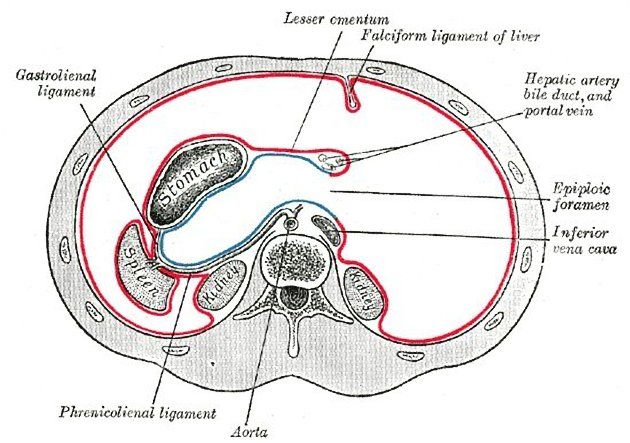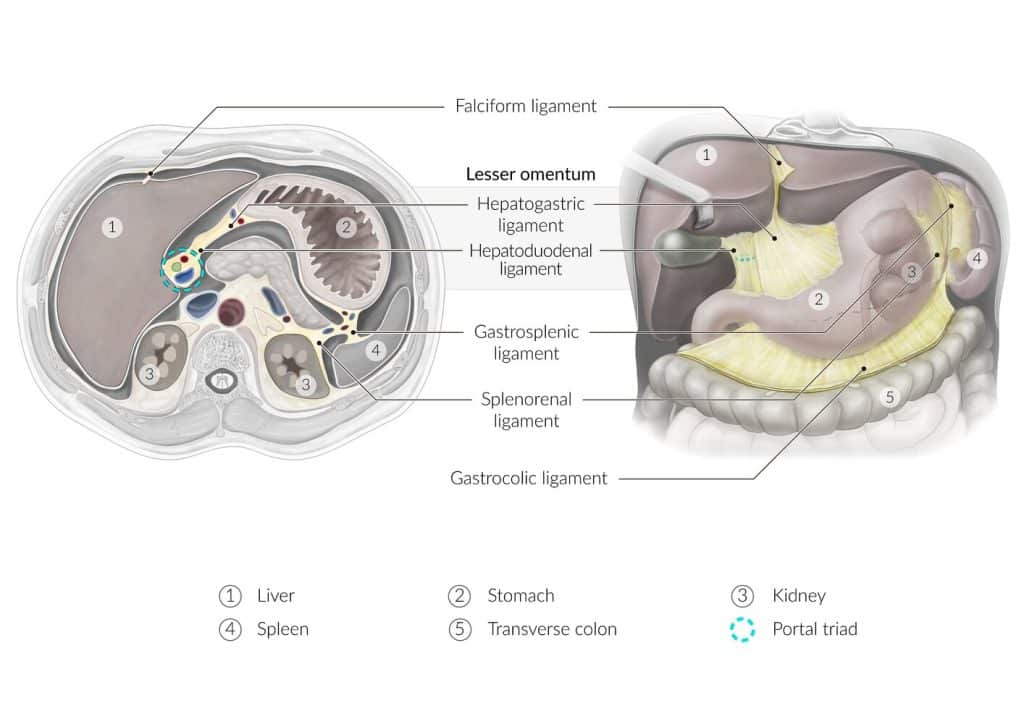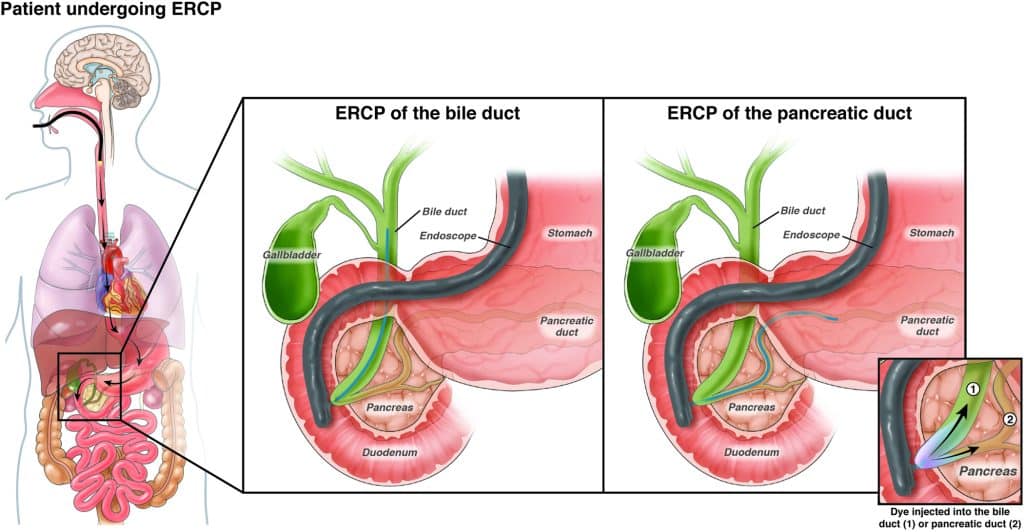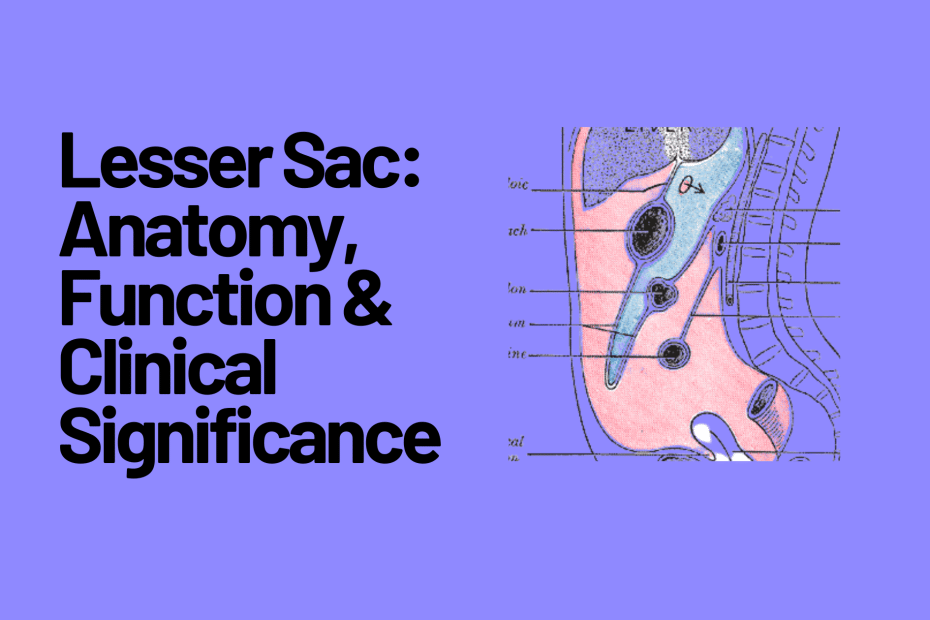Have you ever heard of the lesser sac? Do you know about lesser sac anatomy and why it’s important? Have you ever wondered how this seemingly small part of the body could play such a critical role in our health?
In this article, we’ll dive into the anatomy and function of the lesser sac, exploring its essential role in our digestive system. Understanding the lesser sac’s significance is vital in diagnosing and treating conditions that can affect it, leading to better health outcomes and a happier, healthier life.
Anatomy of the Lesser Sac
The lesser sac anatomy, also known as the omental bursa, is a small cavity located behind the stomach and in front of the pancreas. It is an important part of the digestive system, serving as a storage area for digestive fluids and assisting in the movement of food through the digestive tract. Here’s a breakdown of the lesser sac’s anatomy:
Location:
- The lesser sac is located behind the stomach and in front of the pancreas.
Boundaries and Structures:
- The lesser sac is bound by the lesser omentum, the stomach, the pancreas, and the transverse colon.
- The upper boundary of the lesser sac is formed by the diaphragm.
- The lower boundary of the lesser sac is formed by the transverse mesocolon.
- The greater omentum attaches to the inferior border of the lesser sac.

Relationship to other organs in the abdomen:
- The lesser sac communicates with the greater sac, the larger cavity of the abdomen, through an opening called the epiploic foramen or foramen of Winslow.
- The lesser sac is closely related to the pancreas, which lies in front of it.
- The lesser sac is also in contact with the left kidney, left adrenal gland, and left colic flexure.
Flowchart
lesser sac:
location: behind stomach and in front of pancreas
boundaries:
- lesser omentum
- stomach
- pancreas
- transverse colon
upper boundary: diaphragm
lower boundary: transverse mesocolon
greater omentum attachment: inferior border
communication with greater sac: epiploic foramen/foramen of Winslow
related organs:
- pancreas
- left kidney
- left adrenal gland
- left colic flexure
Function of the Lesser Sac
The lesser sac anatomy plays a crucial role in the digestive system, serving as a storage area for digestive fluids and assisting in the movement of food through the digestive tract. Here’s a more detailed look at the functions of the lesser sac:
Role in the digestive system:
- The lesser sac serves as a reservoir for digestive fluids, such as bile and pancreatic juice.
- These fluids enter the lesser sac through the opening known as the epiploic foramen or foramen of Winslow.
- The lesser sac then redistributes the fluids to the rest of the digestive system as needed.
Assistance in the movement of food:
- The lesser sac is able to expand and contract to accommodate changes in the volume of the stomach and other organs.
- As food moves through the digestive tract, the lesser sac assists in the movement of the food by changing its shape and volume as needed.
Importance in the storage of digestive fluids:
- The lesser sac is an important storage area for bile and pancreatic juice, which are essential for the digestion and absorption of nutrients.
- The ability of the lesser sac to store these fluids allows for more efficient digestion and absorption of nutrients.
Overall, the lesser sac plays a critical role in the digestive system by assisting in the movement of food and serving as a storage area for digestive fluids.
Clinical Significance of the Lesser Sac
The lesser sac can be affected by a variety of diseases and injuries, which can have significant clinical implications. Here are some common conditions that impact the lesser sac:
Disease or injury affecting the lesser sac:
- Trauma to the abdomen, such as a penetrating injury, can result in injury to the lesser sac.
- Inflammation of the pancreas, also known as pancreatitis, can lead to the accumulation of fluid in the lesser sac.
- Infection of the lesser sac, known as lesser sac abscess, can occur as a result of perforation of the gastrointestinal tract or as a complication of pancreatitis.
- Cancer of the pancreas or adjacent organs can also involve the lesser sac.
Tumors and cysts:
- Tumors or cysts can develop in the lesser sac, which can cause symptoms such as abdominal pain or discomfort.
- The most common type of tumor in the lesser sac is a cystic lesion called a pseudocyst, which can occur as a result of pancreatitis or other conditions.
- Other types of tumors that can occur in the lesser sac include solid tumors, such as lymphomas or sarcomas, and metastatic tumors from other organs.
Overall, the lesser sac can be affected by a variety of diseases and conditions, including trauma, inflammation, infection, and tumors. It is important to monitor the lesser sac for any abnormalities and seek medical attention if any symptoms are present.

Here is a table summarizing the common conditions that can affect the lesser sac:
| Condition | Description | Symptoms |
|---|---|---|
| Trauma | Injury to the abdomen, such as a penetrating injury | Abdominal pain, tenderness, swelling |
| Pancreatitis | Inflammation of the pancreas | Abdominal pain, nausea, vomiting, fever |
| Lesser sac abscess | Infection of the lesser sac | Abdominal pain, fever, chills, nausea |
| Pancreatic cancer | Cancer of the pancreas or adjacent organs | Abdominal pain, jaundice, weight loss |
| Pseudocyst | Cystic lesion in the lesser sac | Abdominal pain, nausea, vomiting, feeling full after eating |
| Solid tumors | Lymphomas, sarcomas, or metastatic tumors | Abdominal pain, weight loss, fatigue |
Diagnostic Tests For Lesser Sac Conditions
There are several diagnostic tests that can be used to diagnose conditions affecting the lesser sac. Here are some of the most common tests:
Imaging studies:
- CT scan: This is the most commonly used test to diagnose conditions affecting the lesser sac. It provides detailed images of the organs and structures in the abdomen, including the lesser sac. A contrast material may be used to enhance the images. Advantages of a CT scan include its ability to identify tumors, cysts, and other abnormalities in the lesser sac. A disadvantage is that it exposes the patient to ionizing radiation.
- MRI: This test uses a magnetic field and radio waves to create detailed images of the organs and structures in the abdomen, including the lesser sac. Advantages of an MRI include its ability to provide detailed images without exposing the patient to ionizing radiation. A disadvantage is that it can be more expensive and time-consuming than a CT scan.
Endoscopic tests:
- Endoscopic ultrasound (EUS): This test involves passing an endoscope with an ultrasound probe down the patient’s throat and into the stomach and duodenum. The probe emits sound waves that create detailed images of the organs and structures in the abdomen, including the lesser sac. Advantages of an EUS include its ability to provide detailed images and the ability to obtain tissue samples for biopsy. A disadvantage is that it can be invasive and may require sedation.
- Endoscopic retrograde cholangiopancreatography (ERCP): This test involves passing an endoscope down the patient’s throat and into the stomach and duodenum. A dye is then injected into the pancreatic and bile ducts, and X-rays are taken to identify any abnormalities in the ducts or the lesser sac. Advantages of an ERCP include its ability to diagnose conditions affecting the pancreatic and bile ducts. A disadvantage is that it can be invasive and may require sedation.

- Blood tests:
- CA 19-9: This is a blood test that measures the level of a protein called CA 19-9, which is often elevated in people with pancreatic cancer. Advantages of this test include its non-invasiveness and ease of administration. A disadvantage is that elevated CA 19-9 levels can be seen in other conditions besides pancreatic cancer.
Conclusion
In summary, the lesser sac is a critical area of the abdomen that plays an important role in the digestive system. Its location and relationship to other organs make it susceptible to various conditions, such as tumors, cysts, and infections. Diagnostic tests such as CT scans, MRIs, endoscopic tests, and blood tests can be used to diagnose conditions affecting the lesser sac. Treatment options may include surgical removal of the affected tissue, chemotherapy, and radiation therapy.
It is important to understand the anatomy and function of the lesser sac to better understand and manage conditions affecting this area of the body. Early detection and treatment of conditions affecting the lesser sac can lead to better outcomes and improved quality of life for patients. If you are experiencing symptoms such as abdominal pain, nausea, vomiting, or changes in bowel movements, it is important to talk to your doctor about your concerns and get the appropriate diagnostic tests and treatment.
For more such awesome health related content keep following SimplyMBBS right here!
FAQs:
Q: What is the Lesser Sac and where is it located?
A: The Lesser Sac, also known as the omental bursa, is a space located behind the stomach and in front of the pancreas. It is a crucial area in the abdomen involved in the digestive system.
Q: How does the Lesser Sac interact with other abdominal organs?
A: The Lesser Sac is located in close proximity to various abdominal organs, including the liver, spleen, pancreas, and stomach. It interacts with these organs by providing support and aiding in the movement of food through the digestive tract.
Q: What are some common pathologies associated with the Lesser Sac?
A: The Lesser Sac can be affected by various conditions, including tumors, cysts, abscesses, infections, and inflammation. These conditions can cause symptoms such as abdominal pain, nausea, vomiting, and changes in bowel movements.
Q: What are some imaging techniques used to evaluate the Lesser Sac?
A: Imaging techniques such as CT scans, MRIs, and endoscopic ultrasound can be used to evaluate the Lesser Sac and diagnose conditions affecting this area of the abdomen.
Q: What surgical approaches are used to address problems with the Lesser Sac?
A: Depending on the severity and nature of the condition, surgical approaches such as laparoscopy or laparotomy may be used to remove tumors, cysts, or other affected tissue in the Lesser Sac.
Q: How does the Lesser Sac anatomy affect gastrointestinal and abdominal physiology?
A: The Lesser Sac plays an important role in the digestive system by assisting in the movement of food through the digestive tract and storing digestive fluids.
Q: What should I do if I experience symptoms related to the Lesser Sac?
A: If you are experiencing symptoms such as abdominal pain, nausea, vomiting, or changes in bowel movements, it is important to talk to your doctor about your concerns and get the appropriate diagnostic tests and treatment. Early detection and treatment of conditions affecting the Lesser Sac can lead to better outcomes and improved quality of life for patients.
